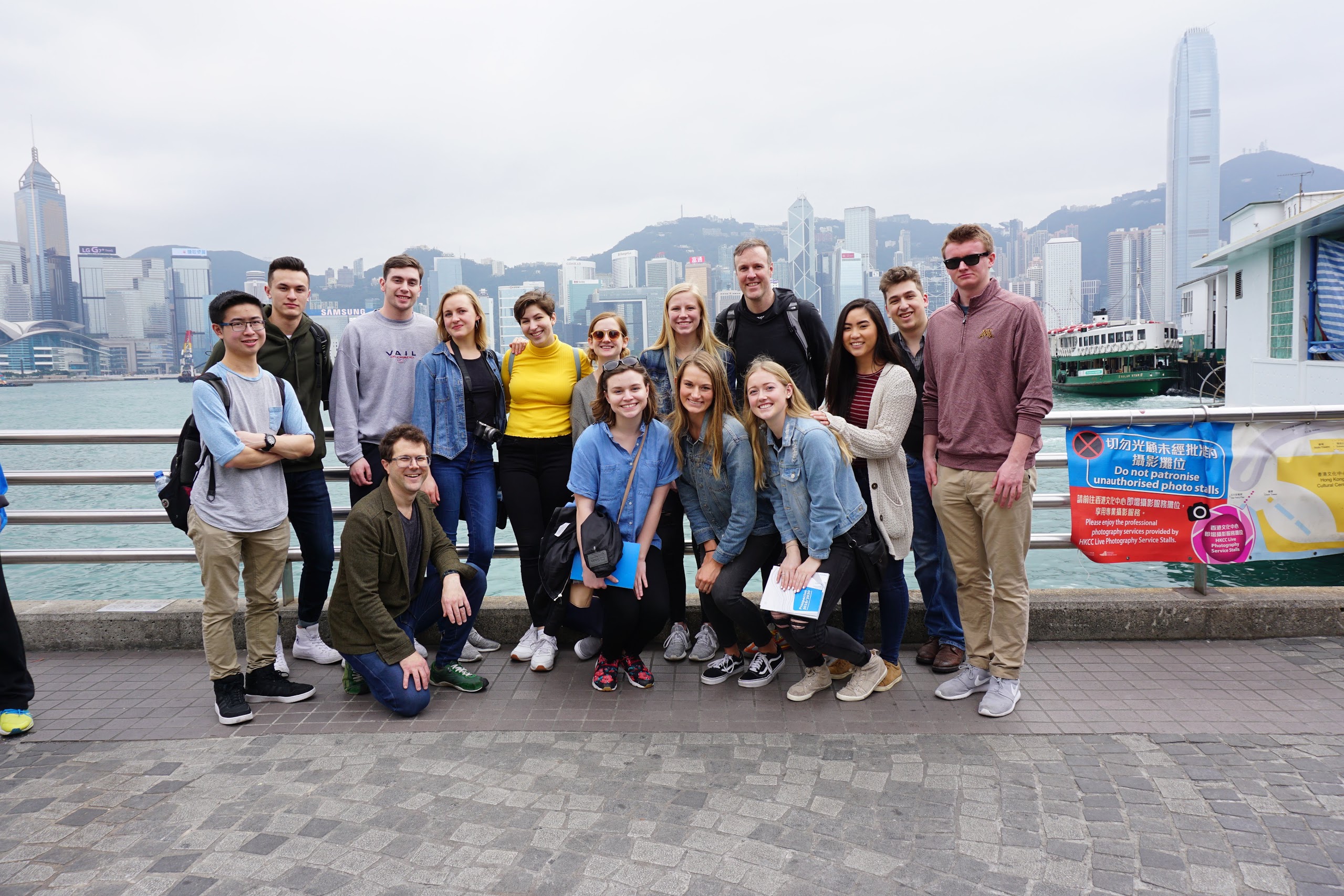From ideation and prototyping to manufacturing and marketing, product design students learned the ins and outs of the product life cycle during a winter break trip to Hong Kong and Shenzhen, China.

The first six days of the trip were spent in Hong Kong, where students visited the Hong Kong Toy Fair, shopping centers, and the Hong Kong Polytechnic University’s Innovation Center. On the second leg of the trip, the students spent four days in Shenzhen, China, where they visited factories in Dongguan and the HQB Electronics Market which is the center of new consumer electronics.
Throughout the trip, students were tasked with prototyping a portable charger for teenagers and were challenged to use the experiences from their trip as design inspiration. They started by doing trend research at stores in Hong Kong before generating ideas and developing concept sketches and renderings. They were then tasked with finding the parts to build their unique charger designs in the HQB Electronics Market to get an estimate of the production cost for their product.
“[Visiting the Electronic Market] made me reassess many of my pre-existing ideas about how prototypes were made, how objects could be manufactured, the accessibility of technology, and the value we place upon certain objects—a value that is not always reflected in the cost of their parts,” said Rachel Davel (Product Design).
On the final day of the trip, each student shared their designs with their classmates. “We each presented our design concepts in two-minute presentations and got feedback from one another on ways to improve our work before turning in our final project,” explained Brooke Bratrud (Product Design).
Students were given one additional week after their return to refine their idea for the power bank before turning it in. “It is impressive what students can design in just a few weeks, especially when you consider how much time we spend on daily cultural excursions,” said Product Design Program Head Barry Kudrowitz. “This experience will change the way these students design products in the future. Once you see first hand how products are made in factories, it’s impossible not to consider manufacturability when developing an idea.”
Driven by the acute need for N95 masks in hospitals, faculty from the University of Minnesota’s College of Design, College of Science of Engineering, and medical school worked together to create two face mask designs that could be assembled using available materials.
Ten years since it launched and one name change later, Toy Product Design (now Product Innovation Lab or iLab) remains one of product design's most popular courses.
A guest post from landscape architecture student Luke Nichols.





